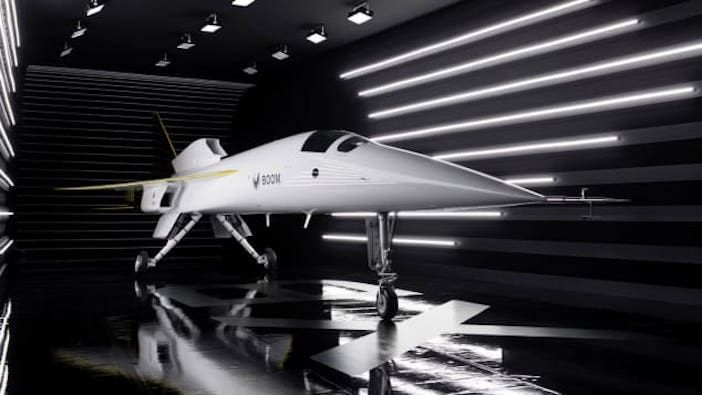Boom Supersonic, has revealed the design of its supersonic demonstrator aircraft XB-1 and confirmed it plans to fly the aircraft for the first time next year
Billed by Boom as history’s first independently developed supersonic jet, XB-1 is slated to fly for the first time next year and will help develop the technologies and refine the design of its planned Overture commercial passenger aircraft.
The 170 ft (52m) long delta-wing Overture will have a wingspan of 60 ft (18m) and seat 55 passengers. Boom plans for Overture to enter service in the mid-2020s. Some 30 Overture aircraft have been pre-ordered by customers including Virgin Group and Japan Airlines.
Overture will have a cruise speed of Mach 2.2 and a range of 4,500 nautical miles. It will be powered by three non-afterburning, medium-bypass turbofan engines, two under the wings and one in the tail.
Blake Scholl, Boom’s founder and CEO said, “Boom continues to make progress towards our founding mission—making the world dramatically more accessible.
“XB-1 is an important milestone towards the development of our commercial airliner, Overture, making sustainable supersonic flight mainstream and fostering human connection.”
According to Boom, its engineers have developed “one of the highest-efficiency civil supersonic engine intakes ever tested” for XB-1. Other notable features of the prototype aircraft include a carbon-composite airframe that maintains its strength and rigidity under the high temperatures and stresses of supersonic flight and a delta wing that balances low-speed stability at take-off and landing with high-speed efficiency.
XB-1 propulsion system will use three GE J85-15 engines to provide more than 12,000 lbs of thrust. The same engines are not expected to be used for Overture – during August this year Boom and Rolls-Royce launched a joint development program for the engines required for Overture.
While flight testing XB-1 in a supersonic corridor in the Mojave Desert in California next year, USA Boom will finalize Overture’s propulsion system and conduct wind tunnel tests to validate Overture’s design.
Read our in-depth feature about the development and testing of the XB-1 supersonic prototype here.





